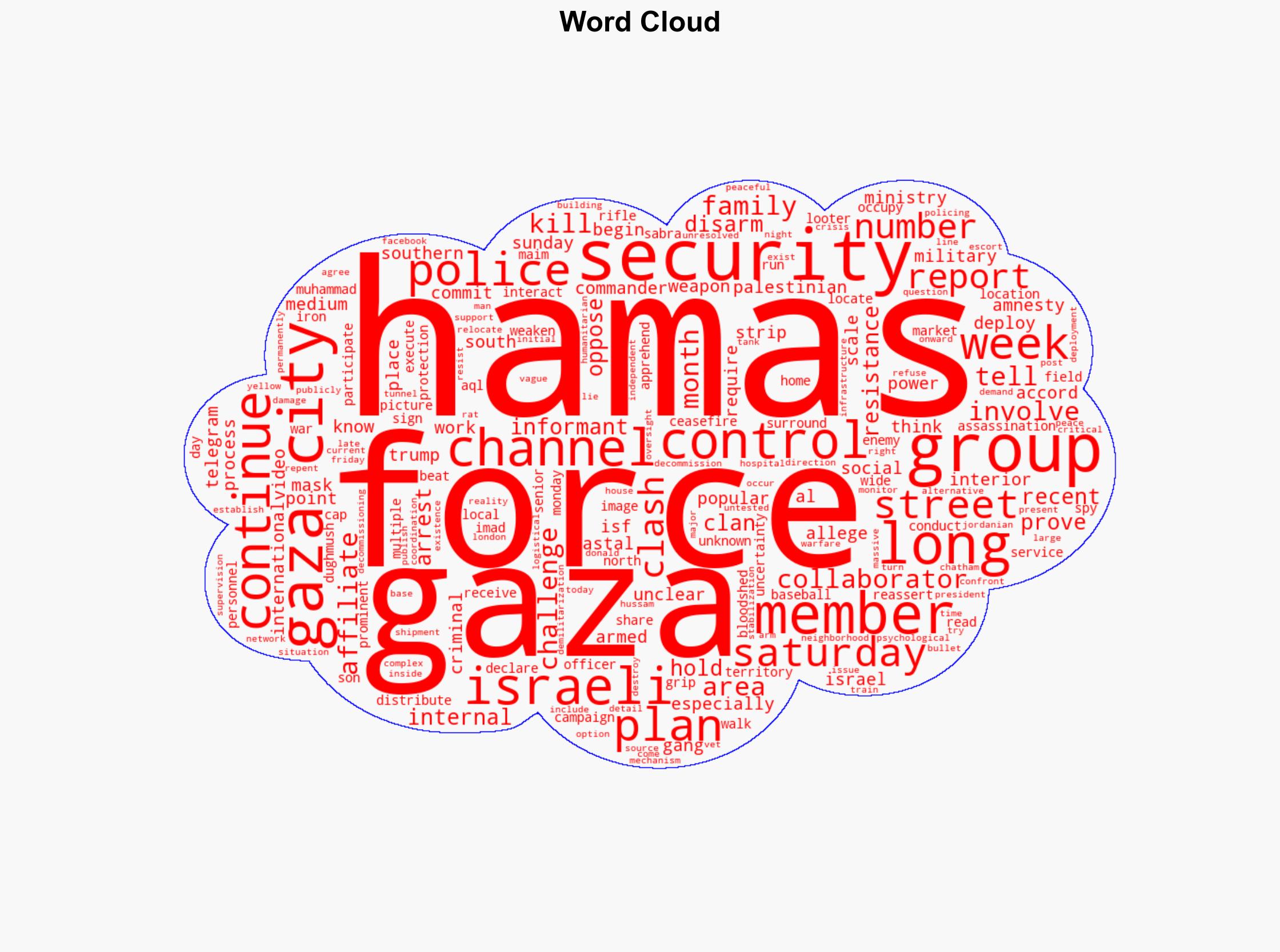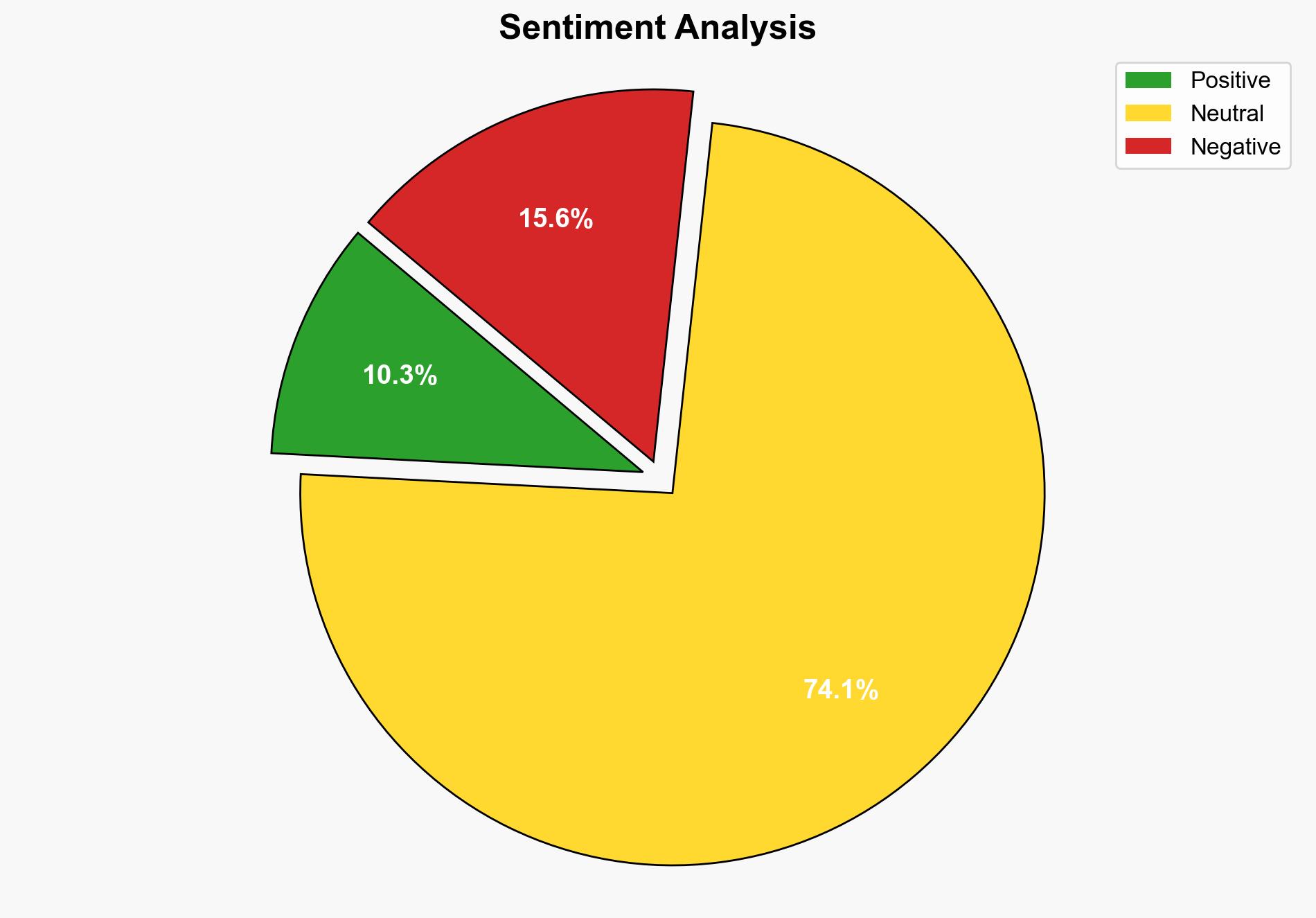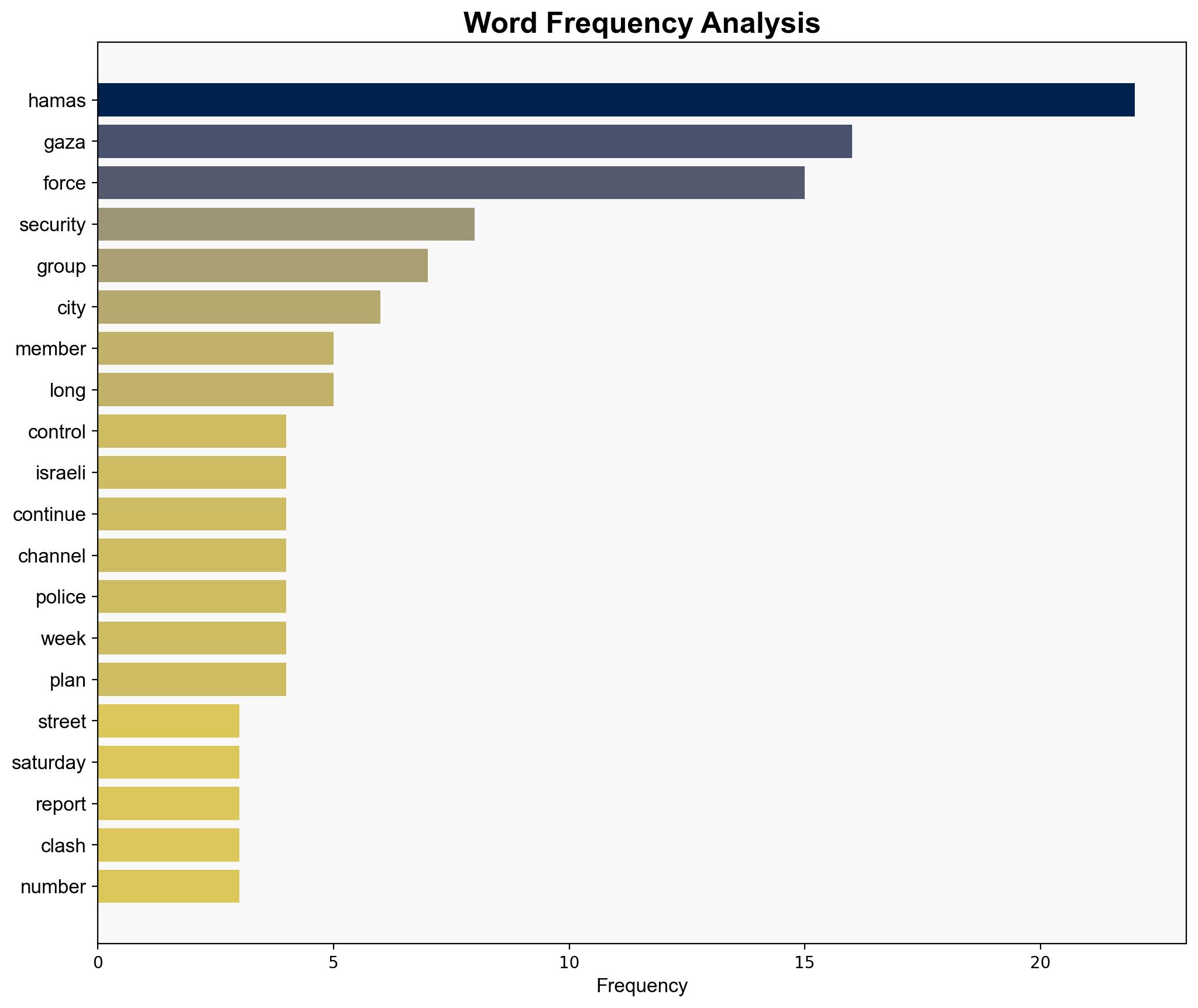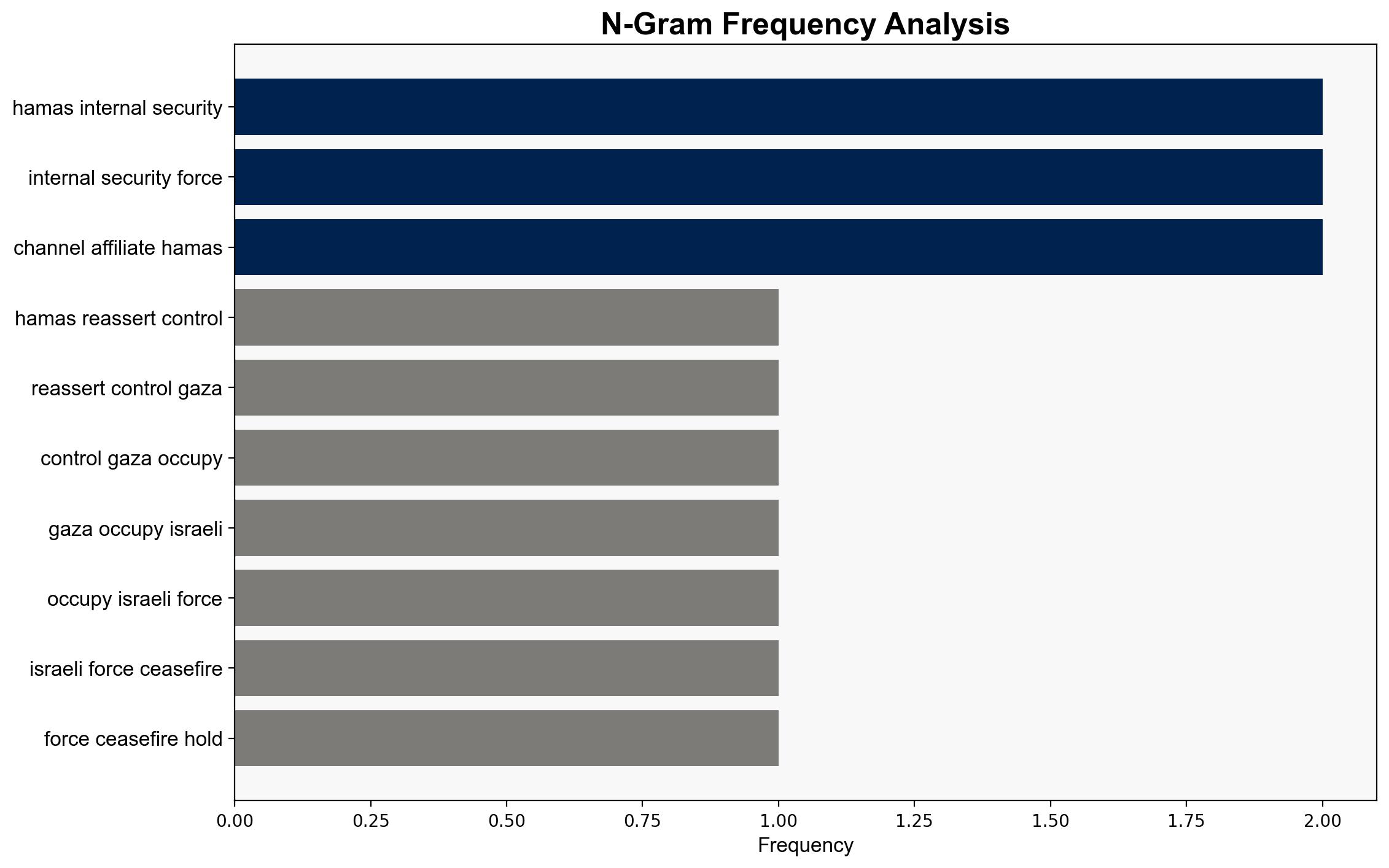Hamas asserts control in Gaza and targets alleged collaborators as ceasefire takes hold – CNN
Published on: 2025-10-12
Intelligence Report: Hamas asserts control in Gaza and targets alleged collaborators as ceasefire takes hold – CNN
1. BLUF (Bottom Line Up Front)
Hamas is actively consolidating its control in Gaza amidst a fragile ceasefire, targeting alleged collaborators and facing internal opposition. The most supported hypothesis suggests that Hamas is reinforcing its authority to prevent internal dissent and external threats. Confidence in this assessment is moderate due to the complexity of the situation and limited transparency. Recommended action includes monitoring Hamas’s internal dynamics and potential shifts in Israeli and international responses.
2. Competing Hypotheses
1. **Hamas is consolidating power to maintain control and deter internal dissent**: This hypothesis posits that Hamas’s actions against alleged collaborators and internal opposition are strategic moves to solidify its grip on Gaza, ensuring stability and deterring challenges to its authority.
2. **Hamas’s actions are primarily reactionary, driven by external pressures and internal chaos**: This alternative suggests that Hamas is reacting to external pressures, such as Israeli demands and international scrutiny, while managing internal chaos and dissent, which may indicate weakened control.
Using the Analysis of Competing Hypotheses (ACH) 2.0, the first hypothesis is better supported by the evidence of organized campaigns against collaborators and the strategic communication through social media channels. The second hypothesis lacks robust support due to insufficient evidence of significant external pressure directly influencing Hamas’s immediate actions.
3. Key Assumptions and Red Flags
– **Assumptions**: It is assumed that Hamas has the capability to effectively control and manage internal dissent without significant external intervention. Another assumption is that the ceasefire will hold long enough for these dynamics to play out.
– **Red Flags**: Reports of ongoing clashes and the presence of armed groups opposing Hamas suggest potential instability. The lack of clarity on the international community’s response to the ceasefire and Hamas’s actions is a critical blind spot.
– **Deception Indicators**: The use of social media to broadcast actions against collaborators could be a psychological strategy to project strength and deter dissent.
4. Implications and Strategic Risks
– **Internal Stability**: Continued internal opposition could lead to increased violence and destabilization within Gaza.
– **Regional Tensions**: Hamas’s actions might provoke Israeli military responses, potentially reigniting broader conflict.
– **International Relations**: The situation could affect international aid and diplomatic efforts, especially if human rights abuses are highlighted.
– **Psychological Impact**: The publicized actions against collaborators might instill fear, affecting civilian morale and resistance.
5. Recommendations and Outlook
- Enhance intelligence gathering on Hamas’s internal dynamics and opposition groups to anticipate potential escalations.
- Engage with international partners to develop contingency plans for humanitarian support in case of renewed conflict.
- Scenario Projections:
- **Best Case**: Hamas stabilizes control, leading to a sustained ceasefire and potential peace negotiations.
- **Worst Case**: Internal dissent escalates into widespread conflict, drawing in Israeli military intervention.
- **Most Likely**: Continued low-level skirmishes with periodic escalations, maintaining a fragile status quo.
6. Key Individuals and Entities
– Muhammad Imad Aql (deceased)
– Hussam al-Astal
7. Thematic Tags
national security threats, regional focus, counter-terrorism, internal conflict





